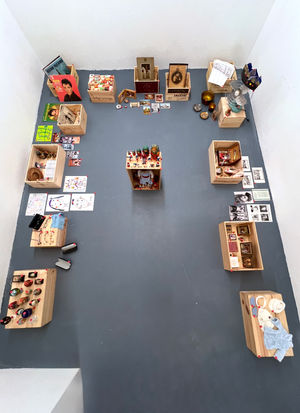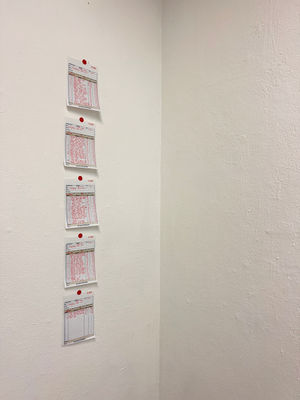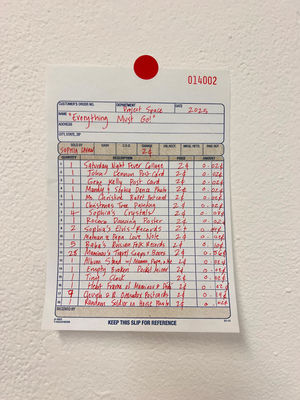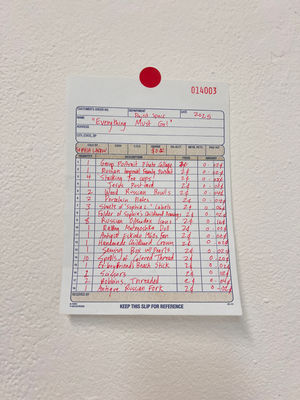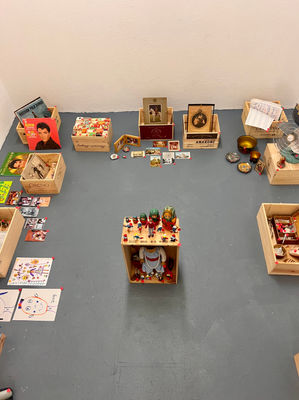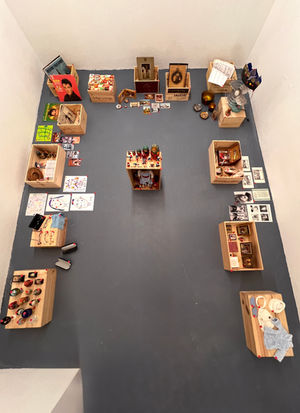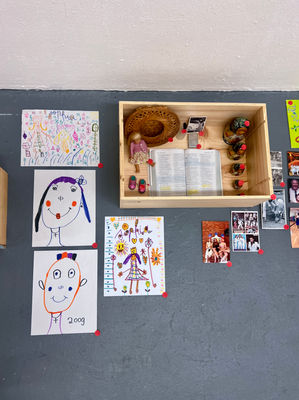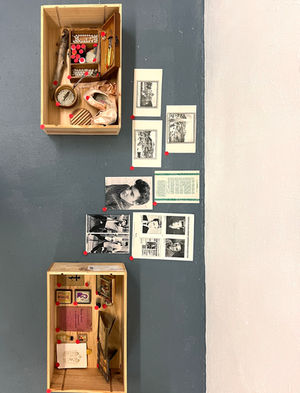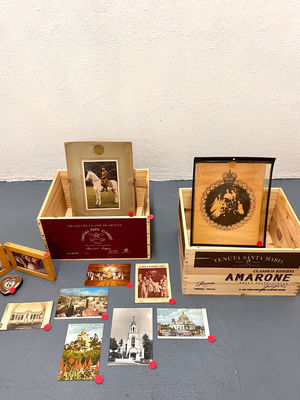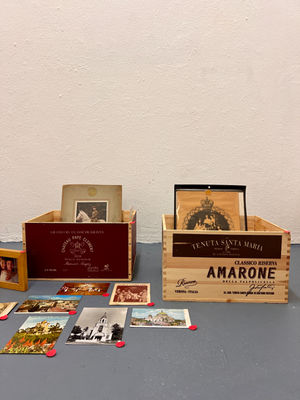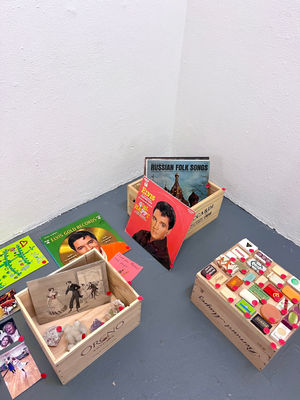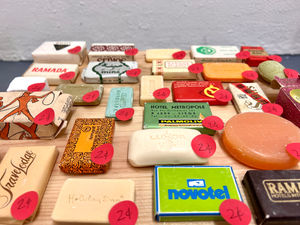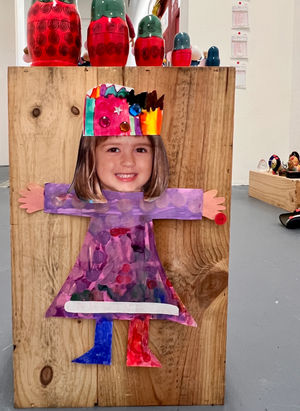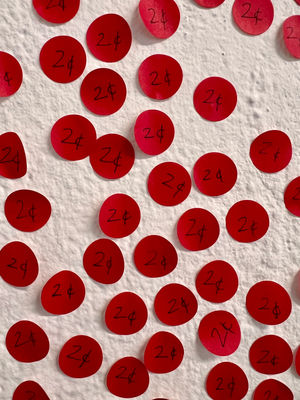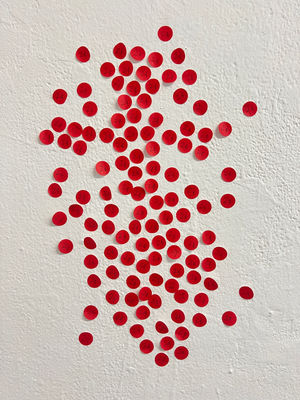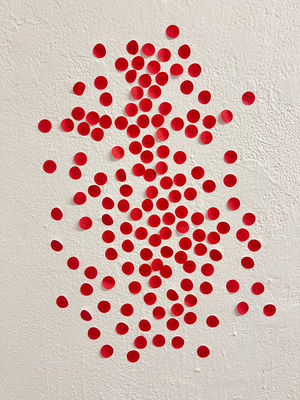Create Your First Project
Start adding your projects to your portfolio. Click on "Manage Projects" to get started
Everything Must Go!
Project type
Installation and Assemblage
Date
2025
Come one, come all!! Everything must go! Yard sale, everything for 2⍧!
Everything Must Go! (2025) presents an estate sale installation of cultural and personal objects–everything selling for a flat rate of two cents. This conceptual liquidation of objects is a tender yet vacuous space. On the one hand, here lies a materialized family legacy, going back several generations. These objects provided security to a family facing displacement and diaspora–now simply “up for sale.” These objects also provide the remnants of stories and relationships no longer accessible from loved ones passed away. This loss removes the life and context of the objects on display, making the installation quite an empty, sterile, and removed space. The objects lay in wood crates lining the floor, much like gravestones of past lives. Their placement on the floor keeps the viewer from easy reach. This physical distance allows the viewer time to think about the object’s life in relation to its owner, past or present. The aerial perspective in which a viewer must experience in looking at each wood crate further diminishes the power and agency of these objects.
This installation toggles between an archive and an estate sale–blurring both in a satirical and embittered way. This work is a physical manifestation of a family archive, displaying objects of everyday use and mementos. The title cards, inventory sales sheets, outline every object up for sale. If the object belonged to a particular individual, these would be written in third person, rather than first or secondary–another layer of removal and depersonalization. By leveling the price of every object to two cents, from priceless family photos to used reading glasses, there is a relinquishing, cleansing, and neutralization of the past. Quite literally everything must go in an effort to grieve and start anew.
These objects belong to my father and I. Faced with the sudden permission and control of these objects, we must assess what remains valuable, monetary or sentimental value. There lies a responsibility as stewards to preserving the past. Though the point of contention between father and daughter is how each respectively ascribes value. Thus, the installation functions as a harsh parody on the guiltlessness of discarding precious objects.

